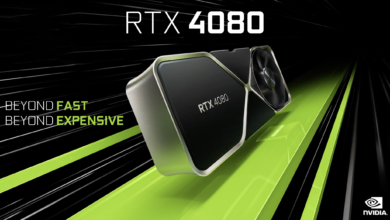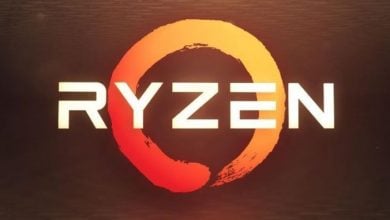NVMe PCIe M.2 Vs. SATA – Which Should You Buy and Why?
Hopefully, everyone is aware of the performance gain you can achieve when upgrading from a mechanical hard drive to any type of SSD. The gap in speed is enormous. Flash storage sweeps the floor with hard drives when it comes to performance, reliability and overall efficiency. This is why SSDs have accumulated so much attention over the years. Flash storage was once a novelty for high-end systems but fortunately, over the years, price drops have made flash storage accessible to nearly every consumer.
But even flash storage can come in different shapes and sizes. We have talked about NVMe M.2 SSDs before but today we will be actually comparing it to other forms of flash storage such as SATA and mSATA. Let’s put the blazing fast speeds of NVMe drives to the test and figure out if you should pay extra for the performance.
Types of M.2 Drives
When most people think of M.2 drives they think of the small super fast drives that use a PCIe connection and the NVMe protocol. What you might be oblivious to is that even M.2 comes in different variations.
SATA M.2 SSDs
When the M.2 form factor first came into existence, NVMe wasn’t developed yet and the older SATA connection was used in the early days. These drives utilize SATA for data transfer which involves AHCI. AHCI was actually intended for hard drives and dates all the way back to 2004. In short, these were the early form of M.2 drives and they are still used in budget builds. These type of drives connect with SATA and are obviously not compatible with PCIe or NVMe so don’t buy these if your motherboard supports the newer PCIe NVMe drives. These drives also don’t provide any real advantages over standard 2.5″ drives apart from the small form factor, which makes it easier to install in laptops or prebuilts.
NVMe PCIe M.2 SSDs
These drives are the form of screeching fast storage we have grown to adore. They use a PCIe connection on your motherboard. The PCIe bus allows for a much faster rate of data transfer and that is part of the reason why these are so much faster. The other important aspect of these drives is NVMe. NVMe is a form of data transfer referred to as NVMe protocol. To put it in simple terms, AHCI is a much older form of data transfer and intended for use with hard drives. NVMe is built solely for flash storage and contributes to even faster speeds than regular SATA drives.
SATA vs mSATA vs Nvme
SATA
 SATA has become a universal standard for connecting all forms of storage over the years. The latest version of this interface is SATA III which has a bandwidth of 6Gb/s and the throughput supported by this interface is 600Mb/s. Even though SATA isn’t the fastest interface out there for storage these days, it is still the industry standard and flash drives can fully utilize its potential. The unfortunate thing is that flash storage is capable of much faster speeds than what SATA can provide. SATA actually bottlenecks the full potential of an SSD. That is why new form factors and interfaces are now being used for the speediest drives.
SATA has become a universal standard for connecting all forms of storage over the years. The latest version of this interface is SATA III which has a bandwidth of 6Gb/s and the throughput supported by this interface is 600Mb/s. Even though SATA isn’t the fastest interface out there for storage these days, it is still the industry standard and flash drives can fully utilize its potential. The unfortunate thing is that flash storage is capable of much faster speeds than what SATA can provide. SATA actually bottlenecks the full potential of an SSD. That is why new form factors and interfaces are now being used for the speediest drives.
mSATA
 Mini SATA or mSATA combines everything that is great about SATA in a tiny form factor. It’s basically an SSD without the 2.5″ housing. It is frequently used in laptops which have limited space. It has almost the same bandwidth and throughput as a regular SATA drive would and there isn’t any noticeable performance drop between SATA SSDs and mSATA SSDs. Unfortunately, this form factor is slowly going obsolete due to the rise of M.2. Nearly every newer motherboard has an M.2 slot and all newer laptops also support M.2. With M.2 NVMe drives being the faster option and regular SATA drives delivering the same performance as mSATA, there really isn’t a reason to buy these types of drives anymore. Unless you have an older laptop that doesn’t have an M.2 slot and you want to upgrade it to an SSD, it probably has an mSATA port. In that scenario, you can use mSATA drives.
Mini SATA or mSATA combines everything that is great about SATA in a tiny form factor. It’s basically an SSD without the 2.5″ housing. It is frequently used in laptops which have limited space. It has almost the same bandwidth and throughput as a regular SATA drive would and there isn’t any noticeable performance drop between SATA SSDs and mSATA SSDs. Unfortunately, this form factor is slowly going obsolete due to the rise of M.2. Nearly every newer motherboard has an M.2 slot and all newer laptops also support M.2. With M.2 NVMe drives being the faster option and regular SATA drives delivering the same performance as mSATA, there really isn’t a reason to buy these types of drives anymore. Unless you have an older laptop that doesn’t have an M.2 slot and you want to upgrade it to an SSD, it probably has an mSATA port. In that scenario, you can use mSATA drives.
NVMe
 Non-volatile memory express protocol (NVMe) is the successor to AHCI. NVMe was developed with purely flash storage in mind. NVMe works in a similar way to higher core count processors. What we mean by that is NVMe breaks apart certain workloads into smaller parts to be processed faster and accessed easier. This takes advantage of flash storage’s ability to access data at a rapid pace. NVMe drives use a PCIe connection on your motherboard. PCIe is much faster than SATA and helps flash storage to reach its full potential. These types of drives come in two form factors. M.2 and add in cards. We have already talked about M.2 in detail before so lets briefly discuss add-in cards. These SSDs have the same speed as M.2 NVMe drives yet they use an x8 or x16 slot on the motherboard, usually found below the processor. These plug into the motherboard in a similar way to graphics cards.
Non-volatile memory express protocol (NVMe) is the successor to AHCI. NVMe was developed with purely flash storage in mind. NVMe works in a similar way to higher core count processors. What we mean by that is NVMe breaks apart certain workloads into smaller parts to be processed faster and accessed easier. This takes advantage of flash storage’s ability to access data at a rapid pace. NVMe drives use a PCIe connection on your motherboard. PCIe is much faster than SATA and helps flash storage to reach its full potential. These types of drives come in two form factors. M.2 and add in cards. We have already talked about M.2 in detail before so lets briefly discuss add-in cards. These SSDs have the same speed as M.2 NVMe drives yet they use an x8 or x16 slot on the motherboard, usually found below the processor. These plug into the motherboard in a similar way to graphics cards.
Final Thoughts
After reading through all of the above information you are now hopefully fully aware of the benefits of an NVMe drive. NVMe really does take speed to another level and is miles ahead of SATA. With all of that in mind, is it worth your money? Well, the answer to that question entirely depends on how much performance you want out of your system and what kind of work you are doing in it. What we can say for sure is that NVMe drives will be faster in nearly all tasks you can throw at it. From booting up windows to firing up a game or editing a video.





